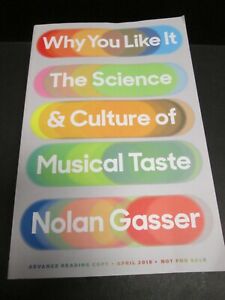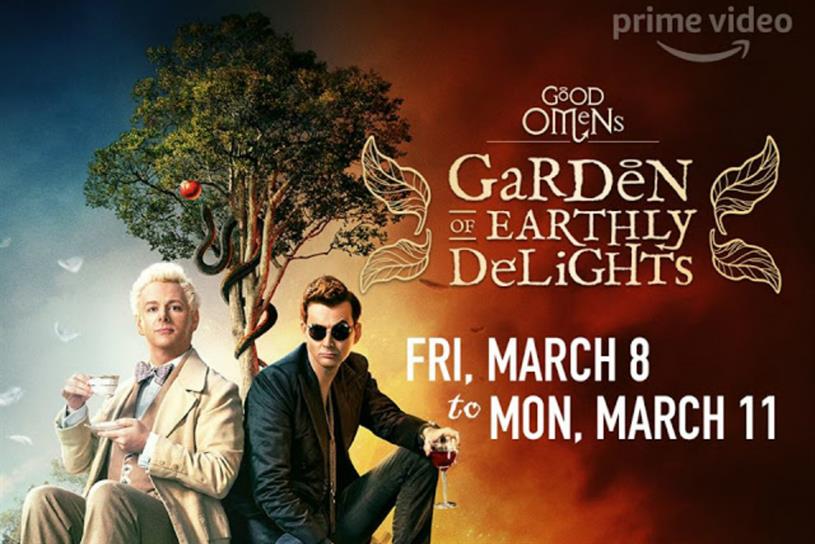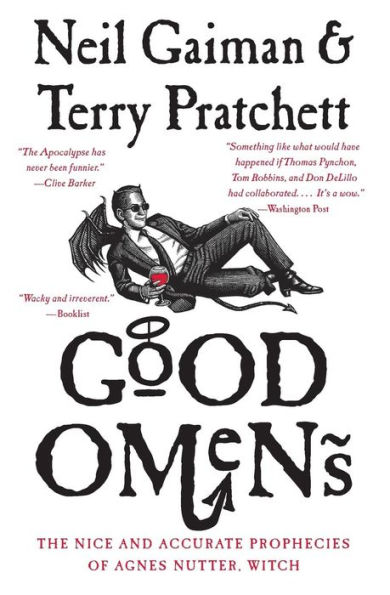
Comic book companies like DC and MARVEL love crossovers. Well, this is one of the strangest crossovers I’ve encountered: Batman meets the Teenage Mutant Ninja Turtles. Yes, Shredder shows up with his menacing Foot Clan. Shredder is stealing all the high tech in Gothem City…but why? Batman and the Turtles start off battling each other, but of course they come to their senses and start to work together to solve the mystery. As you should know by now, I’m a fan of these silly DC Animated feature-length movies. Some of them are very dark, but Batman VS. Teenage Mutant Ninja Turtles provides much lighter fare. If you’re looking for Summer escapism, I recommend the clever Batman VS. Teenage Mutant Ninja Turtles. Cowabunga, dude! GRADE: B+
Author Archives: george
WHY YOU LIKE IT: THE SCIENCE & CULTURE OF MUSICAL TASTE By Nolan Gasser

Nolan Gasser is a composer, pianist, and musicologist. He’s also the genius behind the Music Genome Project that powers PANDORA Radio. Nolan developed his algorithm back in the early 2000s so that listeners to PANDORA could listen to music that appealed to their tastes. In Why You Like It, Nolan explains how music taste works. He also shows how he designed and help build a system that would benefit the millions of listeners of PANDORA to find the music they wanted.
Although the story of PANDORA is fascinating, Nolan’s book goes beyond the story of founding an Internet company to an analysis of music itself. I found some of Nolan’s discussions a bit technical for me, but those of you who play an instrument and can read music will be able to make more sense of what Nolan is saying. However, I did appreciate Nolan’s analysis of why people like “Proud Mary” by Credence Clearwater Revival.
Nolan explores Pop, Rap, Rock, R&B, Hip Hop, Jazz, Electronic, and Classical music. I learned a lot by reading Nolan’s analysis of all these musical genres and hope to listen to some of the music in these genres that he recommends. If you love music, you’ll love this book! What kind of music do you enjoy listening to? Do you listen to PANDORA? GRADE: A
TABLE OF CONTENTS:
Preface p. ix
Introduction: In the Ear of the Beholder p. 1
1 The Rise and Rebirth of the Savage Beast p. 13
Part 1 A Gift of the Gods p. 43
2 Under the Musical Hood: An Orientation p. 45
3 Melody: The Face of Music p. 49
Interlude A The Evolution of Musical Taste: Music and Anthropology p. 70
Part 2 Bar Bands in Andromeda p. 89
4 Harmony: The Internal Body of Music p. 91
5 Rhythm: The Movement of Music p. 119
Interlude B It’s the Overtones, Stupid: Music, Math, and Physics p. 150
Part 3 Unity and Heterogeneity p. 173
6 Form: The Shape of Music p. 175
7 Sound: The Personality of Music p. 219
Interlude C The Singing Cerebrum: Music and the Brain p. 253
Part 4 Musical Metaphors p. 295
8 The Musical Genotype p. 297
9 The Pop Genotype p. 306
Interlude D At the Cellular Level: Music and Cell Biology p. 329
Part 5 Parlez-Vous Gamelan? p. 355
10 Rock Genotype p. 357
11 The Jazz Genotype p. 377
Interlude E Listening with an Accent: Culture and Musical Taste p. 400
Part 6 Questioning the Omnivore p. 429
12 The Hip Hop Genotype p. 431
13 The Electronica (EDM) Genotype p. 455
Interlude F Staking Your Claim: Intraculture and Musical Taste p. 480
Part 7 Who Are You, Anyway? p. 511
14 The World Music Genotype p. 513
15 The Classical Genotype p. 542
Interlude G Mind Over Music: Psychology and Musical Taste p. 590
Part 8 Your Hit Parade p. 627
16 The What and Why of Musical Taste p. 629
Epilogue: Living with Music p. 633
Acknowledgments p. 647
Glossary p. 649
Notes p. 661
Index p. 695
LATE NIGHT

Mindy Kaling wrote and stars in Late Night, a movie that is being marketed as a comedy–but is actually a drama. Emma Thompson brilliantly plays Katherine Newbury, the only woman hosting a late night U.S. talk show. The character of Katherine Newbury is arrogant, acerbic, and driven for Perfection. Newbury doesn’t bother to learn the names of her writers, she simply assigns them numbers for identification (Mindy Kaling’s character, Molly Patel, is Number 8).
The obvious problem confronting Katherine Newbury is that her show is losing its audience. Ratings are falling. Newbury ignores the Internet and Social Media which alienates her from attracting a younger audience. The Network plans to cancel Katherine Newbury’s show. Although Newbury has no friends or children, she does have a husband played by John Lithgow who suffers from Parkinson’s disease. And that becomes a problem, too.
The movie starts out focused on Molly Patel breaking into an all white male writers room, but shifts to Katherine Newbury’s struggle to hold on to her TV show. Yes, there’s humor. Emma Thompson performs a stand-up session where she initially fails to connect with the audience, but then finds her mojo and leaves them laughing. Very clever acting and writing.
It’s early in the movie season, but I’d nominate Emma Thompson for Best Actress based on this performance. GRADE: B+
TOY STORY 4

It’s been nine years since TOY STORY 3 sent me out of the theater with tears in my eyes. The TOY STORY trilogy represents the best of PIXAR animation, both in quality of technical presentation on the screen and the authentic messages the stories convey. I was leery about TOY STORY 4 because the bar had been set so high. But the wizards at PIXAR produced a wonderful fourth chapter for Woody and Buzz and all the other toys!
Woody (voiced by Tom Hanks) attempts to help little Bonnie adjust to Kindergarten where Bonnie creates a new character, Forky, as an art project. Bonnie’s family goes on a road trip with the toys and by an incredible coincidence (SPOILER ALERT) Woody finds his lost love, Bo Peep (voiced by Annie Potts) (END SPOILER ALERT). TOY STORY 4 explores themes about identity, loss, and destiny. My favorite new toy is the Canadian Duke Kaboom (voiced by Keanu Reeves). You’ll laugh, you’ll cry, and you’ll leave the theater gratified by TOY STORY 4’s heartfelt sincerity. GRADE: A-
FRIDAY’S FORGOTTEN BOOKS #535: THE GREAT SF STORIES #10 (1948): Edited by Isaac Asimov and Martin H. Greenberg

The classic Science Fiction story, “In Hiding” by Wilmar H. Shiras, highlights the The Great SF Stories #10. One of Murray Leinster’s best stories, “The Strange Case of John Kingman,” still packs a punch. John D. MacDonald, who would go on to fame and fortune writing the Travis McGee mystery series, shows in “Ring Around the Redhead” and “A Child is Crying” that he had the versatility to write well in any genre. Ray Bradbury’s iconic “Mars is Heaven!” and Judith Merril’s “That Only a Mother” round out the truly classic stories in this anthology.
As a quick glance at the “Table of Contents” shows, the grip of Astounding Science Fiction on SF appears to be slipping in 1948. Other publications like Startling Stories, Thrilling Wonder Stories, and Planet Stories attract quality writers, too. The dominance of Astounding Science Fiction is eroding and change is in the air. GRADE: A
TABLE OF CONTENTS:
INTRODUCTION by Isaac Asimov and Martin H. Greenberg 9
“Don’t Look Now” by Henry Kuttner (STARTLING STORIES, March 1948) 13
“He Walked Around the Horses” by H. Beam Piper (ASTOUNDING SCIENCE FICTION, April 1948) 27
“The Strange Case of John Kingman” by Murray Leinster (ASTOUNDING SCIENCE FICTION, May 1948) 49
“That Only a Mother” by Judith Merril (ASTOUNDING SCIENCE FICTION, June 1948) 66
“The Monster” by A. E. van Vogt (ASTOUNDING SCIENCE FICTION, August 1948) 77
“Dreams Are Sacred” by Peter Phillips (ASTOUNDING SCIENCE FICTION, September 1948) 94
“Mars is Heaven!” by Ray Bradbury (PLANET STORIES, Fall 1948) 117
“Thang” by Martin Gardner (COMMENT, Fall 1948) 135
“Brooklyn Project” by William Tenn (PLANET STORIES, Fall 1948) 138
“Ring Around the Redhead” by John D. MacDonald (STARTLING STORIES, November 1948) 149
“Period Piece” by J. J. Coupling (aka, John R. Pierce) (ASTOUNDING SCIENCE FICTION, November 1948) 169
“Dormant” by A. E. van Vogt (STARTLING STORIES, November 1948) 178
“In Hiding” by Wilmar H. Shiras (ASTOUNDING SCIENCE FICTION, November 1948) 195
“Knock” by Fredric Brown (THRILLING WONDER STORIES, December 1948) 229
“A Child is Crying” by John D. MacDonald (THRILLING WONDER STORIES, December 1948) 240
“Late Night Final” by Eric Frank Russell (ASTOUNDING SCIENCE FICTION, December 1948) 253
EVERY TOOL’S A HAMMER: LIFE IS WHAT YOU MAKE IT By Adam Savage

You might remember Adam Savage from his 14 seasons on Mythbusters. Savage’s new book is a celebration of the acts of experimenting, building, creation, and discovery. Savage believes our kids aren’t learning how to use tools; they’re too busy with their smartphones and video games. I enjoyed Savage’s story of learning how to “fix” things from his father who encouraged his son to take stuff apart and put it back together again. Savage also worked as a model builder. He ended up in Hollywood and then found himself on TV.
I’m one of those guys who didn’t get the “fix-it” gene. I only have two tools in my house: a screwdriver and a hammer. I don’t want to be tempted to fix anything because the result will only make the problem worse and cost me more to repair. I know several friends who do own lots of tools and know how they work. I call them when something goes wrong. But I admire Adam Savage’s attempt to inspire people to build something, to “Do-It-Yourself,” and to improve your life with creativity. GRADE: B+
TABLE OF CONTENTS:
Introduction 1
Chapter 1. Dig through the bottom of the rabbit hole 9
Chapter 2. Lists 37
Chapter 3. Checkboxes 53
Chpater 4. Use more cooling fluid 67
Chapter 5. Deadlines 107
Chapter 6. Drawing 129
Chapter 7. Increase your loose tolerance 147
Chapter 8. Screw > glue 175
Chapter 9. Share 193
Chapter 10. See everything, reach everything 215
Chapter 11. Cardboard 247
Chapter 12. Hammers, blades, and scissors
Chapter 13. Sweep up every day 281
Acknowledgements 291
Sketchbook 292
Index 301
THE WORKSHOP AND THE WORLD: WHAT TEN THINKERS CAN TEACH US ABOUT SCIENCE AND AUTHORITY By Robert P. Crease

Robert B. Crease argues that brilliant minds change the world. He chooses 10 thinkers–some obvious, some obscure–and presents their ideas and impact on today’s world. Bacon, Galileo, and Descartes defined the beginnings of Modern Science. Vico warned that Science could be used for evil purposes and issued an early warning about political leaders like Trump. Mary Shelley’s classic, Frankenstein; or, The Modern Prometheus, suggests there are limits to Science. Comte promoted Science over Religion.
I’m very familiar with Max Weber whose The Protestant Ethic and the Spirit of Capitalism analyzed the economics of the early 20th Century. Weber’s insights into bureaucracies are still taught in Business Schools today. I had no idea who Kemal Ataturk was. Crease’s chapter explains how this Middle-Eastern thinker tried to reconcile Science with social concerns. I confess Edmund Husserl’s work in phenomenology always baffled me. As a college student taking philosophy classes, I attempted Husserl’s Cartesian Meditations: An Introduction to Phenomenology, based on four lectures Husserl gave at the Sorbonne, in the Amphithéatre Descartes, on February 23 and 25, 1929. I came away befuddled.
The final thinker in The Workshop and the World is a curious choice: Hannah Arendt. Arendt is best known for her book, Eichmann in Jerusalem (1963), where Arendt coined the inflammatory phrase “banality of evil” to describe Eichmann and the murderous bureaucracy he ran for the Nazis. Arendt’s book, Origins of Totalitarianism (1951), supplied enough evidence of the mis-uses of Science and Government to warn of planet-wide threats. Arendt is certainly a Big Picture philosopher. If you’re in the mood for some intellectual history, you’ll enjoy the very readable essays in The Worldshop and the World. GRADE: A-
TABLE OF CONTENTS:
Introduction 11
I
1 Francis Bacon’s New Atlantis 27
2 Galileo Galilei and the Authority of Science 48
3 René Descartes: Workshop Thinking 69
II
4 Giambattista Vico: Going Mad Rationally 93
5 Mary Shelley’s Hideous Idea 115
6 Auguste Comte’s Religion of Humanity 133
III
7 Max Weber: Authority and Bureaucracy 165
8 Kemal Atatürk: Science and Patriotism 189
9 Edmund Husserl: Cultural Crisis 205
IV
10 Hannah Arendt: Action 229
Conclusion 265
Acknowledgments 283
Notes 287
Index 301
GOOD OMENS [AMAZON Prime Video] and GOOD OMENS By Neil Gaiman & Terry Pratchett


Good Omens–both the novel and the new AMAZON Prime Video–remind me of an overstuff burrito. Too many characters, too many subplots, too many wacky diversions!
I read Neil Gaiman and Terry Pratchett’s Good Omens back when it was first published in 1990. I reread Good Omens in preparation for AMAZON Prime Video’s 6-episode mini-series with a screenplay written by Neil Gaiman. The Apocalypse is approaching as the armies of Hell and Heaven ready themselves for the Final Conflict. The Anti-Christ, an 11-year-old boy with his Hell Hound, will trigger the Apocalypse from a small town in England.
Standing in the way of the destruction of Earth and Humanity are Aziraphale, an Angel who has been on Earth with the mission of promoting Good Things. And, Crowley, a demon who has spent thousands of years promoting mayhem and mischief. David Tennant plays the demon Crowley with menace. Michael Sheen plays Aziraphale as a fussy, book-loving Angel. The Angel and the Demon have a secret cooperative relationship developed over the centuries. They are appalled and alarmed that the Divine Plan includes mass destruction and genocide.
I liked John Hamm as bossy Archangel Gabriel. I really liked Frances McDormand as the Voice of God as she provides narration for all six episodes of Good Omens. You have to be in the mood to embrace Excess if you want to enjoy Good Omens. GOOD OMENS [AMAZON Prime Video]: GRADE: A-. GOOD OMENS [Novel]: GRADE: B
WESTERN STARS By Bruce Springsteen

Western Stars is like none of the other 18 Bruce Springsteen studio albums. With all the lush strings and orchestral flourishes, the songs on Western Stars sound like the music you would hear on an FM late-night Easy Listening radio station in the mid-1970s. Springsteen says he channeled Burt Bacharach and Glen Campbell on this Baker’s Dozen set of mellow songs. If you’re in the mood for some poignant songwriting with French horns, violins, and cellos listen to Western Stars to revel in listening to Bruce Springsteen’s best CD in a decade. GRADE: A
TRACK LIST:
1. Hitch Hikin’
2. The Wayfarer
3. Tucson Train
4. Western Stars
5. Sleepy Joe’s Café
6. Drive Fast (The Stuntman)
7. Chasin’ Wild Horses
8. Sundown
9. Somewhere North of Nashville
10. Stones
11. There Goes My Miracle
12. Hello Sunshine
13. Moonlight Motel
